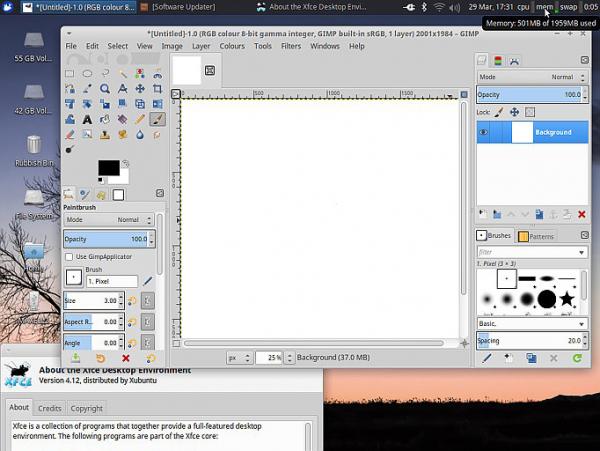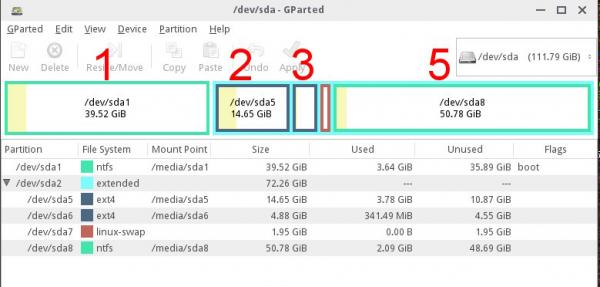There is no real 'preferred' linux distro for Gimp.
Best if you lay out the capabilities of the 2003 Dell.
Memory - you can get linux working in 256 MB but more is better.
Available drive space (especially if you want to keep WinXP)
The cpu might come into it as well. A bang up-to-date linux kernel might not work.
What is the video card and monitor resolution? Gimp is a bit cramped in an old 1280x768 display.
There are the ubuntu versions and spin-offs using light desktop environments (DE's) such as xubuntu.
A debian based linux good for old hardware is AntiX
Most these days can be downloaded as an ISO file and burned as a 'live' CD that you can try before installation. It is a good way to determine hardware problems.
edit: Ok this is my 2007 ThinkPad x61 2 GB memory and drive updated to a 120 GB SSD.
Dual boots WinXP (needed for an equally old Hauppage video capture device) and xubuntu.
display is 1024x768
That Gimp is a 2.9.5 appimage (a portable application).

more edits:
All sorts of ways to set up linux. For a dual boot, if the free space is available it becomes largely automated with modern distros which will also find M$ and create a boot menu.
It might be of interest, this is the drive arrangement of that ThinkPad.

1. The WinXP partition, NTFS. I made it quite large for video capture but not a lot in there.
Unlike windows you can install linux in an extended partition which contains
2 and 3 The linux OS and home partition. Common these days to install as one but I am a bit of a traditionalist.
missed 4 out but it is a swap file. If you are short on system memory you need one of these.
5. A NTFS partition for data. (mainly video) While linux can read/write NTFS, Win needs a utility just to read linux ext2/3/maybe ext4. So NTFS (or FAT32) is the lowest common denominator for sharing.
Nothing hard and fast, there are other arrangements.




